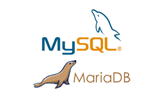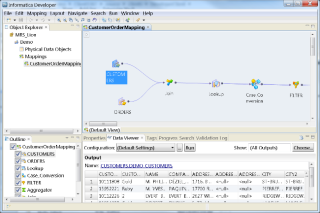Configure su propia red privada con OpenVPN

Vultr le ofrece una increíble conectividad de red privada para servidores que se ejecutan en la misma ubicación. Pero a veces quieres dos servidores en diferentes países.
Wiki.js is a free and open source, modern wiki app built on Node.js, MongoDB, Git and Markdown. Wiki.js source code is publicly hosted on GitHub. This guide will show you how to install Wiki.js on a fresh Debian 9 Vultr instance by using Node.js, MongoDB, PM2, Nginx, Git and Acme.sh.
768MB RAMA/AAAA records set upCheck the Debian version.
lsb_release -ds
# Debian GNU/Linux 9.4 (stretch)
Ensure that your system is up to date.
apt update && apt upgrade -y
Install necessary packages.
apt install -y build-essential apt-transport-https sudo curl wget dirmngr sudo
Create a new non-root user account with sudo access and switch to it.
adduser johndoe --gecos "John Doe"
usermod -aG sudo johndoe
su - johndoe
NOTE: Replace johndoe with your username.
Set up the timezone.
sudo dpkg-reconfigure tzdata
Install Git on Debian.
sudo apt install -y git
Verify the Git version.
git --version
# git version 2.11.0
Install Node.js by utilizing NodeSource APT repository for Node.js.
curl -sL https://deb.nodesource.com/setup_8.x | sudo -E bash -
sudo apt install -y nodejs
Check the Node.js and npm versions.
node -v && npm -v
# v8.11.2
# 5.6.0
Wiki.js uses MongoDB as a database engine. According to that, we will need to install MongoDB on our server. We will use the official MongoDB repositories for installation.
Install MongoDB Community Edition.
sudo apt-key adv --keyserver hkp://keyserver.ubuntu.com:80 --recv 2930ADAE8CAF5059EE73BB4B58712A2291FA4AD5
echo "deb http://repo.mongodb.org/apt/debian stretch/mongodb-org/3.6 main" | sudo tee /etc/apt/sources.list.d/mongodb-org-3.6.list
sudo apt update
sudo apt install -y mongodb-org
Check the version.
mongo --version | head -n 1 && mongod --version | head -n 1
# MongoDB shell version v3.6.5
# db version v3.6.5
Enable and start MongoDB.
sudo systemctl enable mongod.service
sudo systemctl start mongod.service
It is highly recommended to put a standard web server in front of Wiki.js. This ensures you can use features like SSL, multiple websites, caching and more. We will use Nginx in this tutorial, but any other server will do, you just need to configure it properly.
Install Nginx.
wget https://nginx.org/keys/nginx_signing.key
sudo apt-key add nginx_signing.key
rm nginx_signing.key
sudo -s
printf "deb https://nginx.org/packages/mainline/debian/ $(lsb_release -sc) nginx\ndeb-src https://nginx.org/packages/mainline/debian/ $(lsb_release -sc) nginx\n" >> /etc/apt/sources.list.d/nginx_mainline.list
exit
sudo apt update
sudo apt install -y nginx
Check the version.
sudo nginx -v
# nginx version: nginx/1.15.0
Enable and start Nginx.
sudo systemctl enable nginx.service
sudo systemctl start nginx.service
Configure Nginx as an HTTP or HTTPS (if you use SSL) reverse proxy for Wiki.js application.
Run sudo vim /etc/nginx/conf.d/wiki.js.conf and populate it with the basic reverse proxy configuration below.
server {
listen [::]:80;
listen 80;
server_name wiki.example.com;
root /usr/share/nginx/html;
charset utf-8;
client_max_body_size 50M;
location /.well-known/acme-challenge/ {
allow all;
}
location / {
proxy_set_header Host $http_host;
proxy_set_header X-Real-IP $remote_addr;
proxy_pass http://127.0.0.1:3000;
proxy_http_version 1.1;
proxy_set_header Upgrade $http_upgrade;
proxy_set_header Connection "upgrade";
proxy_next_upstream error timeout http_502 http_503 http_504;
}
}
The only things you need to change in the above config is the server_name directive, and potentially the proxy_pass directive if you decide to configure some other port than 3000. Wiki.js uses port 3000 by default.
Check the configuration.
sudo nginx -t
Reload Nginx.
sudo systemctl reload nginx.service
Securing your wiki with HTTPS is not necessary, but it is a good practice to secure your site traffic. In order to obtain an SSL certificate from Let's Encrypt we will use the Acme.sh client. Acme.sh is a pure unix shell software for obtaining SSL certificates from Let's Encrypt with zero dependencies. That makes it very lightweight in comparison to some other ACME protocol clients that require a lot of dependencies to run successfully.
Download and install Acme.sh.
sudo mkdir /etc/letsencrypt
git clone https://github.com/Neilpang/acme.sh.git
cd acme.sh
sudo ./acme.sh --install --home /etc/letsencrypt --accountemail [email protected]
cd ~
Check the version.
/etc/letsencrypt/acme.sh --version
# v2.7.9
Obtain RSA and ECDSA certificates for wiki.example.com.
# RSA 2048
sudo /etc/letsencrypt/acme.sh --issue --home /etc/letsencrypt -d wiki.example.com --webroot /usr/share/nginx/html --reloadcmd "sudo systemctl reload nginx.service" --accountemail [email protected] --ocsp-must-staple --keylength 2048
# ECDSA/ECC P-256
sudo /etc/letsencrypt/acme.sh --issue --home /etc/letsencrypt -d wiki.example.com --webroot /usr/share/nginx/html --reloadcmd "sudo systemctl reload nginx.service" --accountemail [email protected] --ocsp-must-staple --keylength ec-256
NOTE: Don't forget to replace wiki.example.com with your domain name.
After running the above commands, your certificates and keys will be in the following directories.
/etc/letsencrypt/wiki.example.com directory./etc/letsencrypt/wiki.example.com_ecc directory.After obtaining certificates from Let's Encrypt, we need to configure Nginx to take advantage of them.
Run sudo vim /etc/nginx/conf.d/wiki.js.conf again and configure Nginx as an HTTPS reverse proxy.
server {
listen [::]:443 ssl http2;
listen 443 ssl http2;
listen [::]:80;
listen 80;
server_name wiki.example.com;
root /usr/share/nginx/html;
charset utf-8;
client_max_body_size 50M;
location /.well-known/acme-challenge/ {
allow all;
}
# RSA
ssl_certificate /etc/letsencrypt/wiki.example.com/fullchain.cer;
ssl_certificate_key /etc/letsencrypt/wiki.example.com/example.com.key;
# ECDSA
ssl_certificate /etc/letsencrypt/wiki.example.com_ecc/fullchain.cer;
ssl_certificate_key /etc/letsencrypt/wiki.example.com_ecc/example.com.key;
location / {
proxy_set_header Host $http_host;
proxy_set_header X-Real-IP $remote_addr;
proxy_pass http://127.0.0.1:3000;
proxy_http_version 1.1;
proxy_set_header Upgrade $http_upgrade;
proxy_set_header Connection "upgrade";
proxy_next_upstream error timeout http_502 http_503 http_504;
}
}
Check the configuration.
sudo nginx -t
Reload Nginx.
sudo systemctl reload nginx.service
Create an empty document root folder where Wiki.js should be installed.
sudo mkdir -p /var/www/wiki.example.com
Navigate to the document root folder.
cd /var/www/wiki.example.com
Change ownership of /var/www/wiki.example.com folder to user johndoe.
sudo chown -R johndoe:johndoe /var/www/wiki.example.com
From the /var/www/wiki.example.com folder, run the following command to download and install Wiki.js.
curl -sSo- https://wiki.js.org/install.sh | bash
You can run the following command in order to view the currently installed version of Wiki.js.
node wiki --version
# 1.0.78
Once the installation is completed, you'll be prompted to run the configuration wizard.
Start the configuration wizard by running.
node wiki configure
This will notify you to navigate to http://localhost:3000 to configure Wiki.js. If you have Nginx in front of Wiki.js, then it means you can open your domain name (e.g. http://wiki.example.com) instead of going to localhost.
Using your web browser, navigate to http://wiki.example.com and follow the on-screen instructions. All the settings entered during the configuration wizard are saved in the config.yml file. The configuration wizard will automatically start Wiki.js for you.
By default, Wiki.js will not start automatically after a system reboot. In order to make it start on boot, we need to setup the PM2 process manager. PM2 comes bundled with Wiki.js as a local NPM module, so we don't need to install PM2 globally.
Tell PM2 to configure itself as a startup service.
/var/www/wiki.example.com/node_modules/pm2/bin/pm2 startup
Finally, save the current PM2 configuration.
/var/www/wiki.example.com/node_modules/pm2/bin/pm2 save
Your Wiki.js instance runs as a background process, using PM2 as its process manager. You can reboot your OS with sudo reboot and check if Wiki.js starts after a reboot.
Vultr le ofrece una increíble conectividad de red privada para servidores que se ejecutan en la misma ubicación. Pero a veces quieres dos servidores en diferentes países.
¿Usando un sistema diferente? Couch CMS es un sistema de gestión de contenido (CMS) simple y flexible, gratuito y de código abierto que permite a los diseñadores web diseñar
Usar un usuario sudo para acceder a un servidor y ejecutar comandos a nivel raíz es una práctica muy común entre Linux y Unix Systems Administrator. El uso de un sud
Este artículo le enseñará cómo configurar una cárcel chroot en Debian. Supongo que está utilizando Debian 7.x. Si está ejecutando Debian 6 u 8, esto puede funcionar, pero
Introduction An easy way to set up a VPN server on Debian is with PiVPN. PiVPN is an installer and wrapper for OpenVPN. It creates simple commands for you t
Using a Different System? Introduction Kanboard is a free and open source project management software program which is designed to facilitate and visualiz
Using a Different System? Neos is a Content Application Platform with a CMS and an application framework at its core. This guide will show you how to instal
Introducción Cacti es una herramienta de monitoreo y gráficos de código abierto que se basa completamente en datos RRD. A través de Cacti, puedes monitorear casi cualquier tipo de dispositivo
Java es un lenguaje de programación / máquina virtual independiente de la plataforma. En este tutorial, instalaremos la implementación de OpenJDK de Java 8 en un Debian
Git es un sistema de control de versiones (VCS) que permite el seguimiento de cambios en el código. En este tutorial, veremos cómo instalar un servidor HTTP (S) Git, un
Introducción MySQL tiene una gran característica conocida como vistas. Las vistas son consultas almacenadas. Piense en ellos como un alias para una consulta larga. En esta guía,
Using a Different System? Matomo (formerly Piwik) is an open source analytics platform, an open alternative to Google Analytics. Matomo source is hosted o
Hiawatha es un servidor web que tiene en cuenta la simplicidad, la facilidad de uso y la seguridad. Es la solución perfecta para servidores más pequeños, hardware antiguo o incrustación
Munin es una herramienta de monitoreo para examinar procesos y recursos en su máquina y presenta la información en gráficos a través de una interfaz web. Usa el siguiente
¿Usando un sistema diferente? En esta guía, veremos cómo configurar un servidor FTP (ProFTPd) para transferir archivos entre su PC y su servidor.
Using a Different System? NodeBB is a Node.js based forum. It utilizes web sockets for instant interactions and real-time notifications. NodeBB source code i
¿Usando un sistema diferente? TaskWarrior es una herramienta de gestión de tiempo de código abierto que es una mejora en la aplicación Todo.txt y sus clones. Debido a th
Introduction Debian 10 (Buster), is the successor to Debian 9 (Stretch). It was released on July 6, 2019. In this tutorial, we will be upgrading an existin
Introducción En este tutorial, cubriremos el proceso de agregar un rango / subred de IP completo a un servidor Linux que ejecuta CentOS, Debian o Ubuntu. El proceso
¿Usando un sistema diferente? Plesk es un panel de control de alojamiento web patentado que permite a los usuarios administrar sus sitios web y bases de datos personales y / o de clientes
ZPanel, un panel de control de alojamiento web popular, se bifurcó en 2014 a un nuevo proyecto llamado Sentora. Aprende a instalar Sentora en tu servidor con este tutorial.
Aprende cómo instalar Vtiger CRM, una aplicación de gestión de relaciones con el cliente, en CentOS 7 para aumentar tus ventas y mejorar el servicio al cliente.
Esta guía completa le mostrará cómo configurar un servidor Counter-Strike 1.6 en Linux, optimizando el rendimiento y la seguridad para el mejor juego. Aprende los pasos más recientes aquí.
Los ataques de ransomware van en aumento, pero ¿puede la IA ayudar a lidiar con el último virus informático? ¿Es la IA la respuesta? Lea aquí, sepa que la IA es una bendición o una perdición
ReactOS, un sistema operativo de código abierto y gratuito, está aquí con la última versión. ¿Puede satisfacer las necesidades de los usuarios de Windows de hoy en día y acabar con Microsoft? Averigüemos más sobre este estilo antiguo, pero una experiencia de sistema operativo más nueva.
Whatsapp finalmente lanzó la aplicación de escritorio para usuarios de Mac y Windows. Ahora puede acceder a Whatsapp desde Windows o Mac fácilmente. Disponible para Windows 8+ y Mac OS 10.9+
Lea esto para saber cómo la Inteligencia Artificial se está volviendo popular entre las empresas de pequeña escala y cómo está aumentando las probabilidades de hacerlas crecer y dar ventaja a sus competidores.
Recientemente, Apple lanzó macOS Catalina 10.15.4, una actualización complementaria para solucionar problemas, pero parece que la actualización está causando más problemas que conducen al bloqueo de las máquinas Mac. Lee este artículo para obtener más información
13 Herramientas comerciales de extracción de datos de Big Data
Nuestra computadora almacena todos los datos de una manera organizada conocida como sistema de archivos de diario. Es un método eficiente que permite a la computadora buscar y mostrar archivos tan pronto como presiona buscar.








